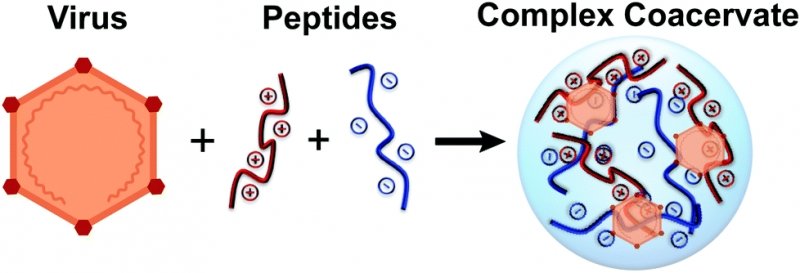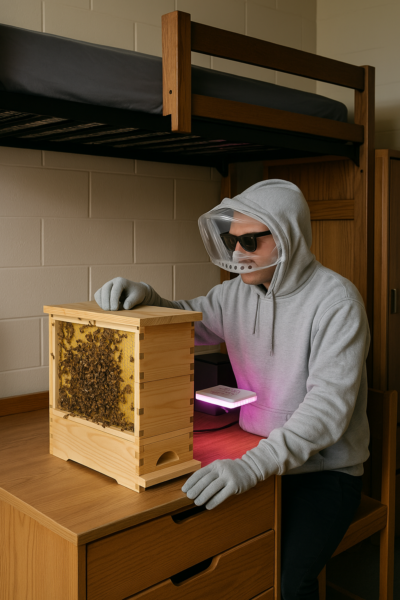Half of vaccines are wasted annually because they aren’t kept cold. Chemical engineers have discovered a way to stabilize viruses in vaccines with proteins instead of temperature.
Ever receive a vaccination that seemed to burn while it was injected? The vaccine solution likely contained a lot of salt or sugar — natural preservatives that help keep it stable, in addition to the cold temperature at which it was kept.
The viruses in vaccines, which train our cells to identify and vanquish viral invaders, must be kept cold to keep them from bursting apart. The typical shipping temperature for vaccines ranges from 2 to 8 degrees Celsius (35 to 47 degrees Fahrenheit).
Viruses are kept cold for the same reason we refrigerate food items. “You wouldn’t take a steak and leave it out on your counter for any length of time and then eat it,” said Caryn Heldt, director of the Health Research Institute at Michigan Technological University and professor of chemical engineering. “A steak has the same stability issues — it has proteins, fats, and other molecules that, in order to keep them stable, we need to keep them cold.”
Like proteins, viruses unfold when it’s hot or there’s space to move around. Heat provides energy for viruses to shake themselves apart, and not being crowded gives them the room to fall apart. Stable vaccines need cold or crowding.
But what if cold storage isn’t available? What if someone accidentally leaves the package on the counter? What if the power goes out?
Heldt, together with Sarah Perry, professor of chemical engineering at the University of Massachusetts Amherst, has developed a way to mimic the body’s environment in vaccines using a process called complex coacervation. Rather than relying on refrigeration, Perry and Heldt tap the other method to keep viruses stable — crowding.
Freezer Camp
To keep the viruses in vaccines stable, everyone along the supply chain, from manufacturing facility to shipping company to doctor’s office, must maintain the cold temperature. This cooperative effort is known as the cold chain. If a vaccine is kept above that temperature range for even an hour, it may become ruined and unusable.
The World Health Organization estimates that up to 50% of vaccines are wasted every year because the cold chain and ideal temperature for storage cannot be maintained.
The human body is a crowded place. Cells of varying shapes and sizes jockey for position. This includes viruses, which do their nefarious work by hostile takeover. Viruses invade our cells, commandeering them to replicate. Unchecked, virus copies explode out of the cells like darts through a balloon. Then all of those replicas go and do the same to other cells — and before you know it, you’re sick.
Heldt researches vaccine manufacturing techniques and the COVID-19 pandemic has served as a masterclass. But SARS-CoV-2 isn’t the only virus in the world — there is still need for other vaccines and storage methods that don’t rely on refrigeration.
“The conditions for a vaccine that make it good to be injected into someone’s body are almost the opposite of what makes a virus stable,” Heldt said. “There’s a really hard trade-off of keeping the virus stable to get good immune response, while having the right components in the vaccine that are safe to inject.”
Virus Burritos
The process of complex coacervation keeps viruses in vaccine solutions stable by crowding them tightly together, reducing the need for refrigeration. Graphic Credit: Caryn Heldt and Sarah Perry
Heldt and Perry use polypeptides — synthetic proteins — that have positive or negative charges. When these charged peptides are put in solution, they stick together and form a separate liquid phase, a process called complex coacervation. The liquid wraps around virus capsids, holding the virus material together like a burrito’s tortilla.
“Coacervate materials are something that we actually see all of the time in our daily lives,” Perry said. “Many shampoos undergo coacervation. When you put the shampoo onto your wet hair, the water that is present dilutes the shampoo, causing it to phase separate and facilitating the removal of dirt and oil from your hair.”
Complex coacervation works for nonenveloped viruses, which have no lipid, or fatty layer, around them. Nonenveloped viruses include polio, rhinovirus (which causes the common cold) and hepatitis A.
Next Steps
Heldt and Perry received a $400,000 developmental research grant in March 2020 from the National Institutes of Health (NIH) to continue their research through early 2022, which includes exploring ways to reduce salt concentrations (used in the vaccine to break apart the coacervate phase when it is injected by altering peptide sequences). Additionally, the chemical engineers are working on ways to apply complex coacervation to enveloped viruses — like SARS-CoV-2 — which require a balance of tightness and compartmentalization in the lipid layer in a way nonenveloped viruses do not.
“Looking forward, we want to think more about the specific materials that we use in our coacervates,” Perry said. “Crowding alone isn’t a universal strategy to improve virus stability. We need to understand how different polymers interact with our viruses and how we can use this to create a toolbox that can be applied to future challenges.”
As the taco bar of vaccine storage expands, the research shows that naturally occurring proteins improve our vaccines and make them more widely accessible around the world, refrigerated or not.
“The great thing about these amino acids is that they are the same building blocks as in our bodies,” Heldt said. “We’re not adding anything to the vaccines that aren’t already known to be safe.”
Solving the cold storage conundrum promises to improve access to vaccinations against viruses. Bypassing the cold chain with polypeptides and innovative chemical engineering stands to improve health care and reduce medical emergencies around the world.





